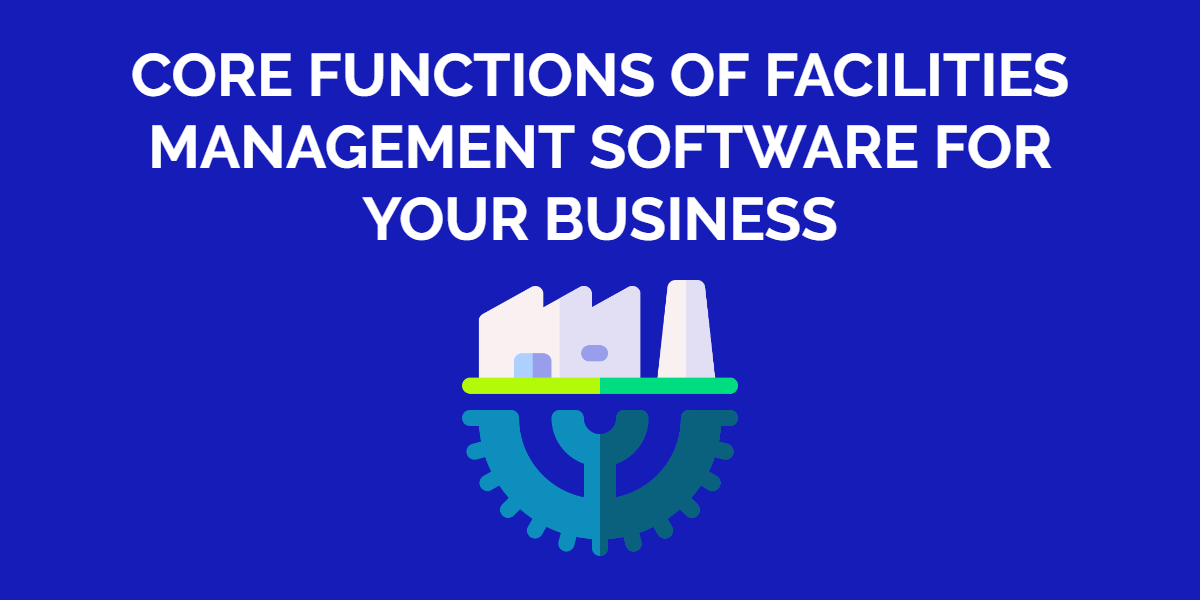Facilities management refers to the services and tools used to maintain, improve and sustain physical assets owned by an organization. This includes practices that help to keep assets in top shape for smooth business operations. Having the right facilities management system – i.e. a standard set of processes – enables businesses to prevent premature breakdowns and prolong useful life of equipment. For this reason, many businesses opt to help automate these processes with dedicated facilities management software.
A facilities software keeps a record of all equipment data in a single, secure repository in the cloud. Data centralization and dedicated management workflows offer easier and more efficient ways to track performance, schedule service events and plan replacements on a timely basis.
Without proper facilities management tools, companies are likely to suffer from low productivity and high repair costs, which can contribute to slower growth and success. Here are a few reasons why companies should implement robust facilities management routines:
- Efficient equipment tracking: Companies operate with hundreds of different equipment types and other assets that need to be closely monitored on a daily basis. A reliable facilities management system provides updated records of equipment specifications, locations, depreciation to provide accurate performance insight over time.
- Informed decision making: Facilities management software enables you to easily identify risk areas for all your equipment. Such information can be used to schedule maintenance sessions or order replacement parts without serious delays. Easy access to vital equipment information drives informed decision making while reducing costs.
- Regulatory Compliance: Through system-based facilities management, businesses can more easily and reliably track regulatory requirements for all types of equipment. Maintaining all guidelines in one place, allows managers to better monitor potential liabilities and respond quickly when issues arise.

Read more: 4 Key Facilities Maintenance Tasks for the Holiday Shutdown
Why should you implement a facilities management software for your business?
Facilities management (FM) is a core function of any organization and is a key factor in the realization of growth targets through optimized equipment ROI and cost control. Let’s take a look at 4 core functions of a facilities management software:
Simplified maintenance management
Maintenance management is a key aspect of facilities management. It includes maintenance of physical buildings, assets and equipment. Beyond simply tending to facilities, a business can benefit greatly from targeting improvements and sustainability through a long-term facilities management program. According to Finance Online, 20% of equipment downtime occur due to mechanical failure. Lack of a detailed maintenance process in particular will negatively impact productivity and can lead to premature equipment retirement.
But with a suitable facilities management program, businesses can effectively plan and schedule repair and service activities for equipment. Further, based on tracked utilization patterns, companies can schedule preventive maintenance to minimize instances of unplanned downtime. As all such events are noted down in every equipment’s history, they can be accessed to derive a performance report whenever needed.
Efficient inventory tracking
Facilities management includes keeping track of hundreds of consumable inventories. This list includes small but critical items such as light bulbs and screwdrivers. Running out of important inventory items can cause serious delays in business projects. But facility managers can avoid such disruptions by investing in suitable software that monitors inventory utilization.
With facilities management software, businesses can automate aspects of the procurement process by setting up low stock alerts. This is helpful especially for equipment spare parts, as they can be ordered in advance. Email alerts sent out for low stock to technicians leads to faster and easier purchase order management. Efficient facilities inventory management enables you to make smart purchase decisions and be stocked up for maintenance events.

Collaborative work orders
An organization’s facilities need to be constantly monitored and updated to ensure smooth daily operations. All facilities-related maintenance requests generated work orders, which are processed by technicians, and are most often time-sensitive. A modern facilities management system enables businesses to generate, assess and prioritize work orders.
A cloud-based platform for work orders allows you to sync maintenance progress across departments to avoid any conflicts. For instance, when a work order is created, relevant employees and vendors are each alerted to get everything ready for a pending maintenance task. Flexibility in work order management is a key requirement for an effective facilities management solution. The most effective software packages will enable you to assign work orders, track associated costs and customize workflows according to your business needs.
Read more: 5 Actionable Maintenance Management Practices to Lower Downtime
Insightful reports
When it comes to facilities management, there are numerous KPIs that need to be closely monitored. An automated solution enables you to track equipment and generate value-added business data that can be utilized to measure performance. This data can be used to run insightful reports for critical facilities management KPIs.
Easy access to actionable reports helps companies control costs and maximize return on facilities. Here are some examples of facilities reports that provide the greatest benefit and should be run on a regular basis:
- Upcoming maintenance: This report will allow you to keep track of equipment due and overdue for maintenance. A best practice is to have no more than 6 weeks of backlog for maintenance.
- Service costs: All costs related to labor and inventory consumed are included in the service cost report. This report can help determine yearly budgets and allow facility managers to allocate resources accordingly.
- Equipment history: A summary of all maintenance events for equipment is quite helpful to calculate the total useful life. By looking at the frequency of downtimes and repair, you can estimate the retirement date of the equipment and dispose of it on time.

Facilities management solution to cut costs and optimize business operations
Implementing a cloud-based facilities system automates equipment tracking saving costs related to manual labor and resources. By using facilities software, businesses can access advanced analytics and identify low performing equipment, as well as plan replacements or upgrades as needed. In this way, real-time data enables businesses to make informed decisions and predict budgets based on accurate equipment usage and maintenance routines. Overall, a facilities management solution improves collaboration, boosts productivity and ROI for the long term.
About EZOfficeInventory
EZOfficeInventory is a leading asset tracking software. It allows you to track, maintain, and report on inventory from anywhere, at any time. We offer a free 15-day trial – no credit card required!







